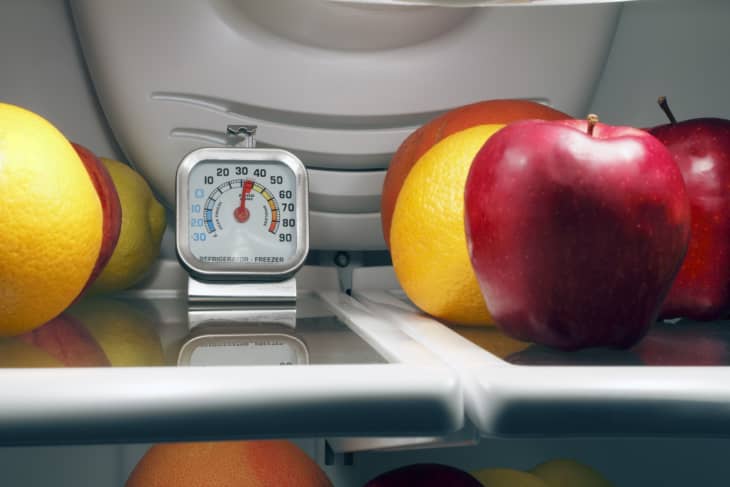At What Temperature Should My Refrigerator Be Set?
A refrigerator’s sole purpose is to keep things cold. Simple, right? But if you’ve ever dug through your crisper drawers to find your carrots have turned into frozen sticks, then you know the pains of having a refrigerator that’s set to the wrong temperature. And one that’s too warm can have adverse effects if your food spoils quickly.
Do you know the temperature your fridge should be set? Here’s everything you need to know about keeping your fridge cool (but not too cool).
What’s the Right Temperature?
Your refrigerator’s most important goal is to slow the growth of bacteria without freezing your food. Freezing usually doesn’t do good things to the taste and texture of your food, but you want to keep things as cold as possible without actually freezing.
The ideal temperature range for your fridge is 35 to 38 degrees Fahrenheit.
Bacteria growth starts tripling around the 40 degree mark and things freeze at 32, so we’re sticking with 35 to 38 as a goal.
How Do I Know If It’s at the Right Temperature?
Newer refrigerators may have digital displays that show the current temperature, so check there first and adjust as needed.
Older or more basic refrigerators may not have a thermometer that indicates temperature but instead just have a dial with number settings on it. Check the manual to figure out what those numbers mean: in my fridge, a higher number means the refrigerator will run colder. But since these dials may not tell you the actual temperature inside, your best bet is to invest in a refrigerator thermometer.
Why get a refrigerator thermometer? This is the most accurate way to get a temperature reading, plus a freestanding thermometer can be put in various locations in your fridge to see if some spots are colder than others. Once you know where your fridge is coldest and warmest, you can put things like eggs, meat, and milk in the coldest parts and keep condiments in the warmest.
Another added bonus of a freestanding fridge thermometer is that if the power goes out, it will still display the temperature so you know if the food inside is safe to eat.
→ Find one: Taylor Professional Freezer-Refrigerator Thermometer, $10.59 at Amazon
How Do You Keep It at the Right Temperature?
So once you set your refrigerator properly, how can you actually keep it at the right temp?
- Minimize the number of times you open the door. When starting a recipe, try to grab everything you’ll need out of there in one trip. Group things that need to go back in on the counter and put them all back in at once.
- Check the door seal. Sometimes a gasket needs to replaced to make your refrigerator run more efficiently.
- Try to keep a full fridge. A full fridge means your refrigerator won’t have such large temperature swings back and forth each time the door is opened. If you don’t have enough food to keep your fridge full, simply fill empty bottles with water and keep them stocked on all the empty shelves. Not only will it keep your temperature riding steady year round, but you’ll always have plenty of cold water!
- Let your food cool down first. Putting warm or hot things straight into the fridge means that it has to work harder at cooling everything down again. Hot foods can also heat the fridge up to a temperature that is unsafe for all of the other foods in there.
If you invest in a fridge thermometer and get to know your fridge, you can keep things in their proper places at a safe temperature and hopefully avoid frozen lettuce in the future!
- Related: 5 Tips to Make Your Refrigerator More Efficient
Updated from a post originally published in May 2012.
